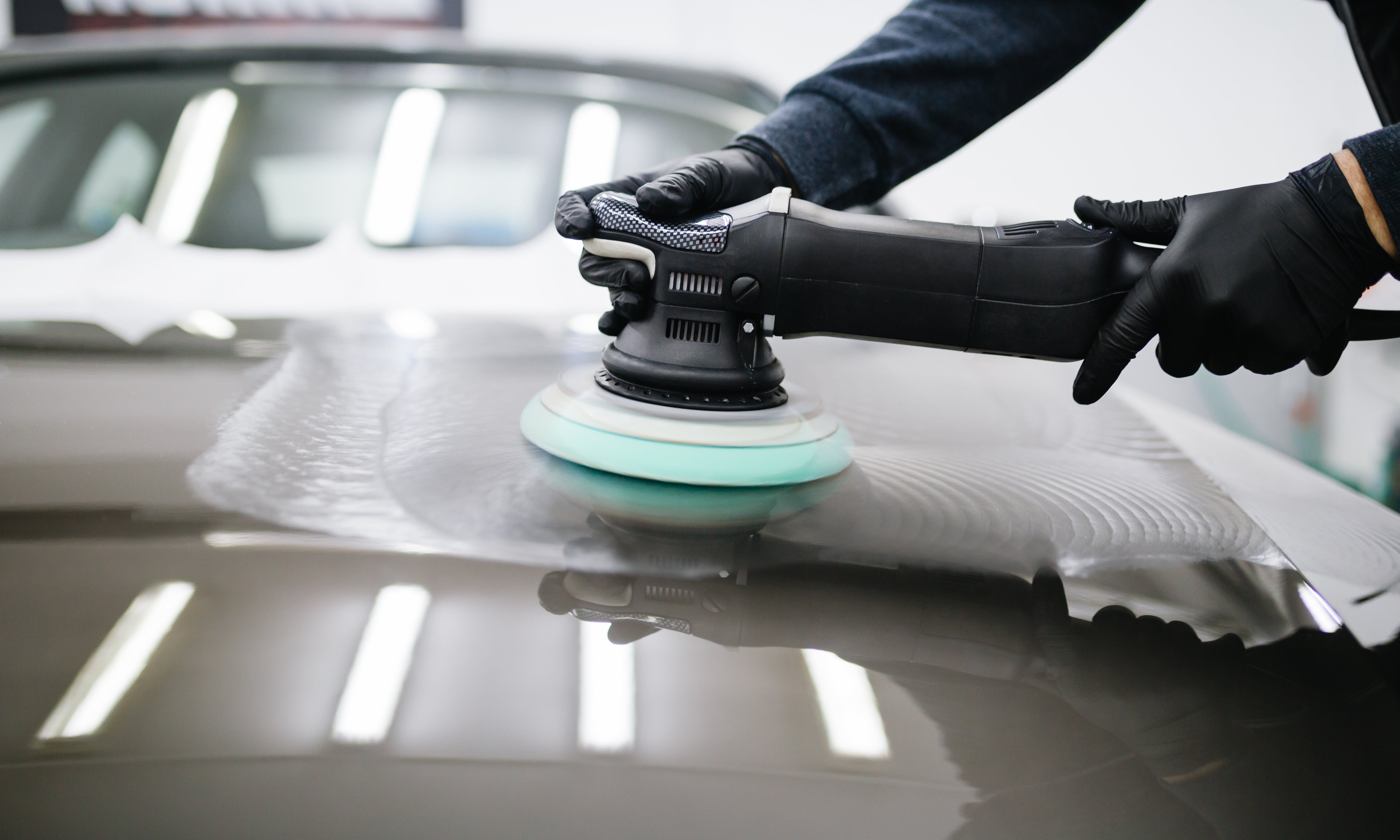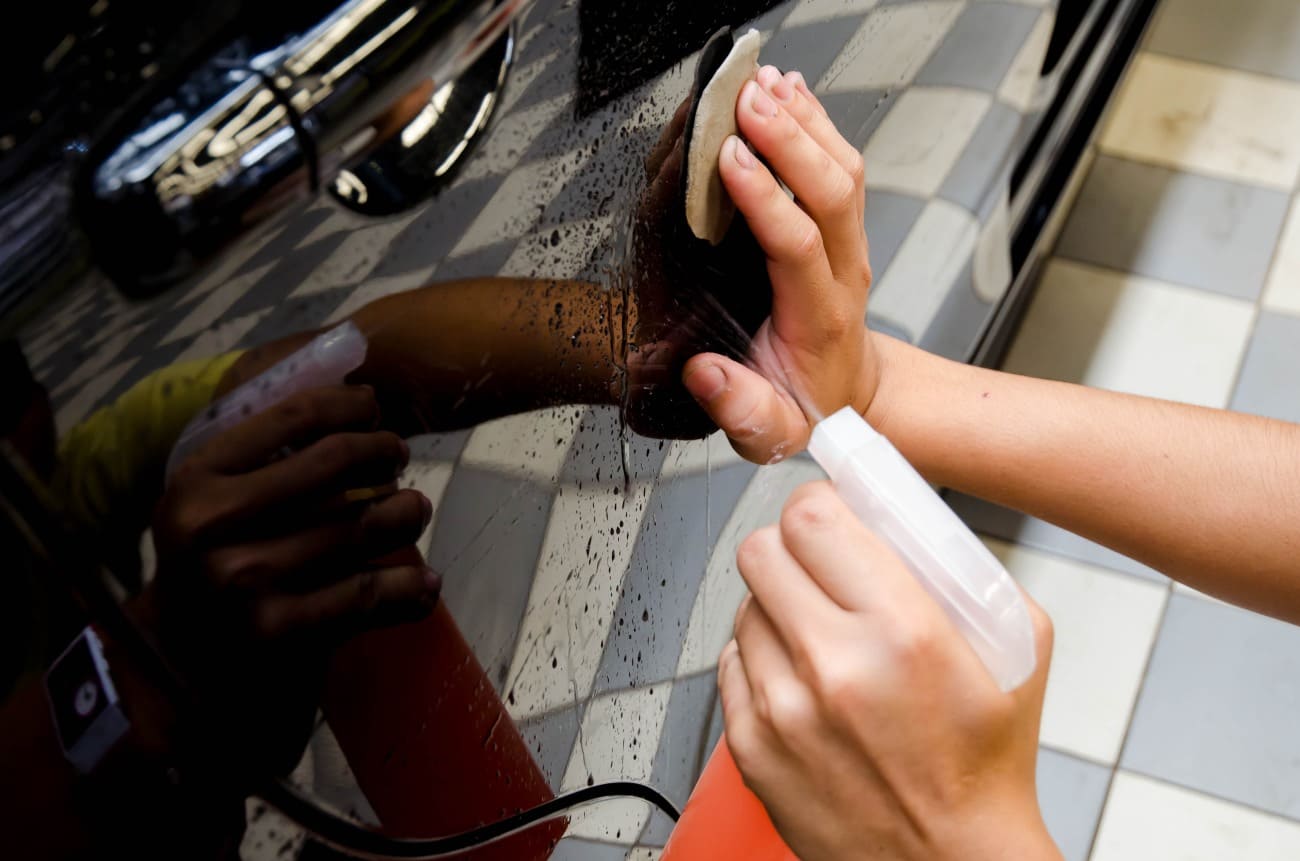GFK / Gelcoat polishing: How to do it right!
Glass fiber reinforced plastic, often abbreviated as GFRP, is a composite material made of plastic and glass fibers. It’s also commonly referred to as fiberglass. GFRP can be made from thermosetting plastics like polyester resin (UP) or epoxy resin, as well as thermoplastics like polyamide. In the automotive and boat building sectors, GFRP is usually combined with a protective and more visually appealing "Gelcoat" coated. The term "gelcoat" refers to a hard paintwhich acts as a protective layer on molded parts made of fiber-reinforced plastics like GFRP. The gelcoat protects the component from moisture (hydrolysis), UV radiation, and pressure damage by serving as a sealant.
We mainly find fiberglass components on boats.In many cases, the entire hull is even made of fiberglass. Fiberglass is also often used on RVsFor many models, the rear and/or front is made of fiberglass, or sometimes even the entire body.
Fiberglass & gelcoat difficult to polish?
Polishing fiberglass (GFRP) or gelcoat usually becomes necessary when, due to natural wear, parts no longer look as visually appealing. This is noticeable when the surface loses its shine and appears dull, cloudy, or faded. In addition to aesthetic issues, the GFRP surface also becomes much more susceptible to dirt, which can easily stick and even penetrate the surface.
Polishing gelcoat-coated fiberglass surfaces is generally more difficult than polishing regular automotive paint, because gelcoat, as mentioned above, is an extremely hard coating. However, our "Ultra-Cut polishing pads combined with Max-Cut polish" make the job much easier thanks to our own polishing system.
Our guide to polishing fiberglass/Gelcoat:
This guide includes some proven tips and product recommendations that we have already successfully tested for you.
You’ll need: a polishing machine (ideally a rotary machine, as it provides more power than a dual-action machine), Ultra Cut polishing pads, Max Cut polish, and a soft microfiber cloth.
Step 1: Preparation – Make sure the fiberglass surface is clean by removing dirt, dust, or any other contaminants. Use a mild cleaner and water to thoroughly clean the surface. Then dry it carefully.
Step 2: Polishing – Attach the polishing pad to the polishing machine and apply a sufficient amount of polish to the pad. [Max Cut Polish is a dust-free polish that can be worked for a long time. This is especially beneficial when polishing fiberglass, as most other polishes tend to start dusting and sticking.] Work the polish into small sections using a crosshatch pattern. The areas should not be larger than about 16x16 inches to achieve an even and satisfactory result.
Step 3: Remove and inspect the polish – Wipe the area with a soft microfiber towel to remove polish residue. Check the area from different angles to see if the result turned out well. If you notice any inconsistencies, simply repeat the process.
Step 4: (Usually only necessary for dark surfaces) If you want a finishing touch to remove any holograms, you can do this ideally with our medium polishing pads and medium polish.
Step 5: Aftercare – After polishing, you can protect the surface with a wax or sealant made specifically for fiberglass. Apply the wax or sealant according to the manufacturer’s instructions. This will protect the surface and help the shine last longer.
TIP: Our Ultra-Shine Quick Detailer is simply sprayed on and wiped off, giving you great preservation. You can also use this product in between to care for your fiberglass surfaces.
Please note that this guide is very general and may vary depending on specific conditions and products used. It’s always advisable to read and follow the instructions provided by the manufacturers of the products you use.




Leave a comment
All comments are moderated before being published.
This site is protected by hCaptcha and the hCaptcha Privacy Policy and Terms of Service apply.